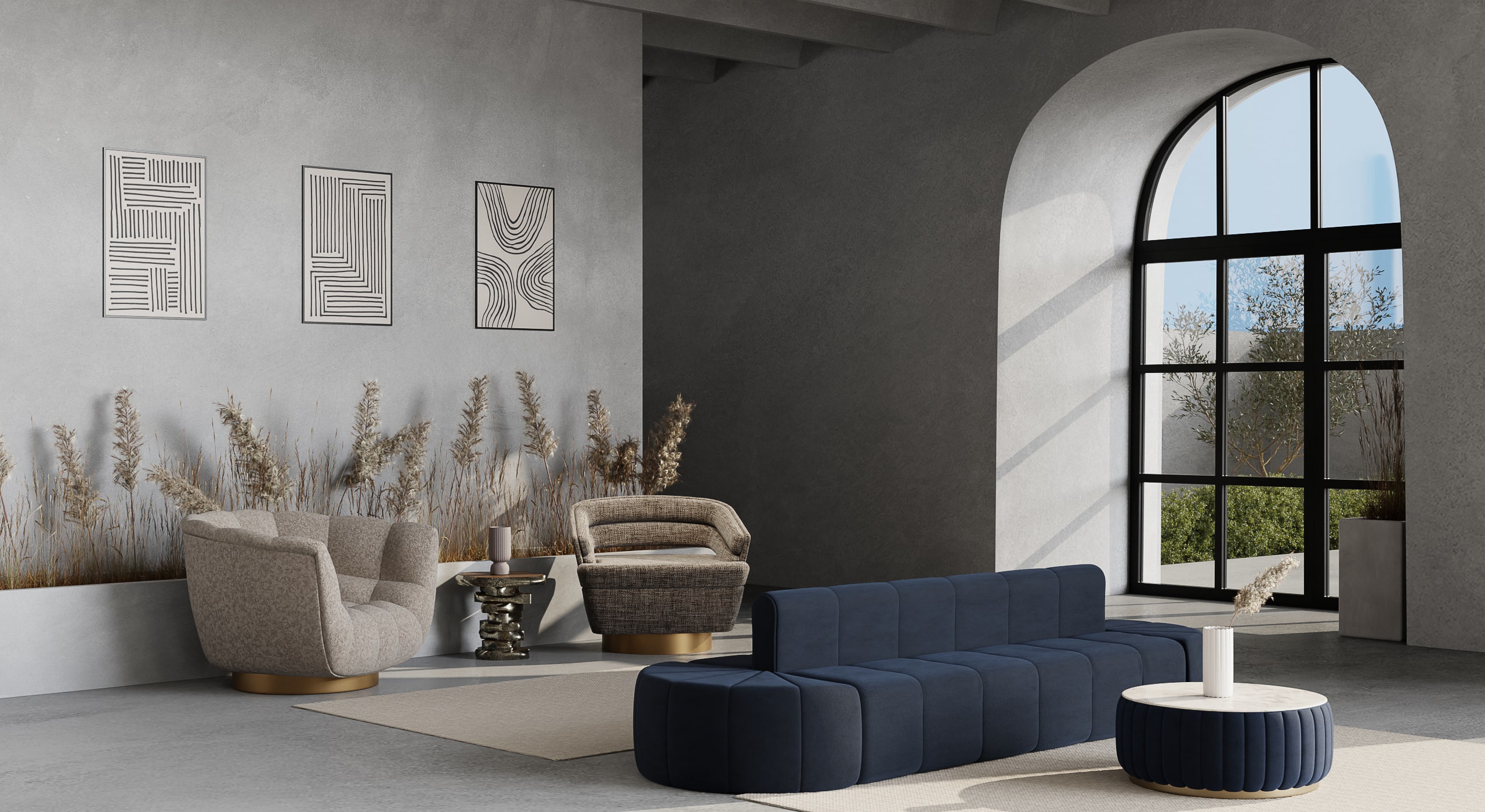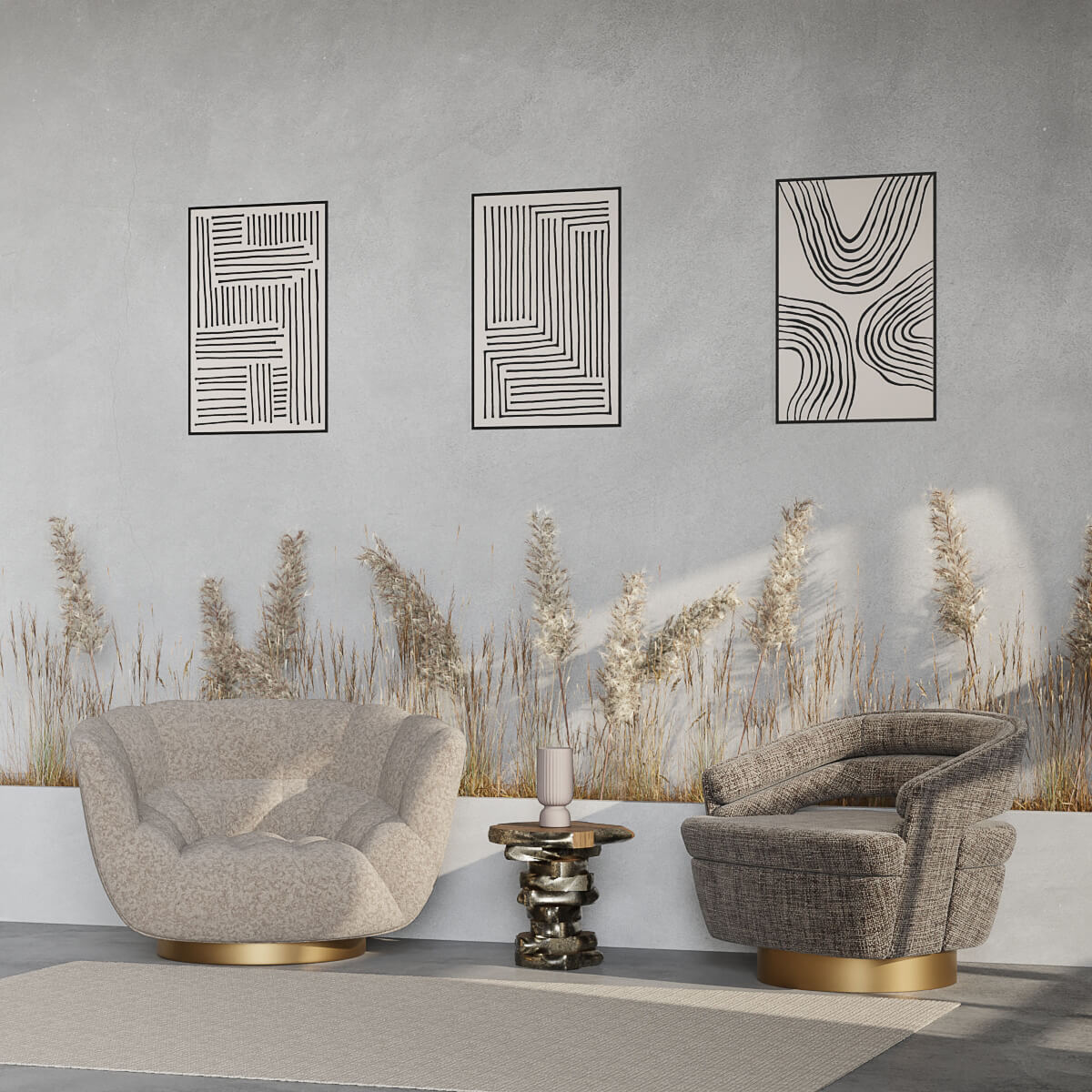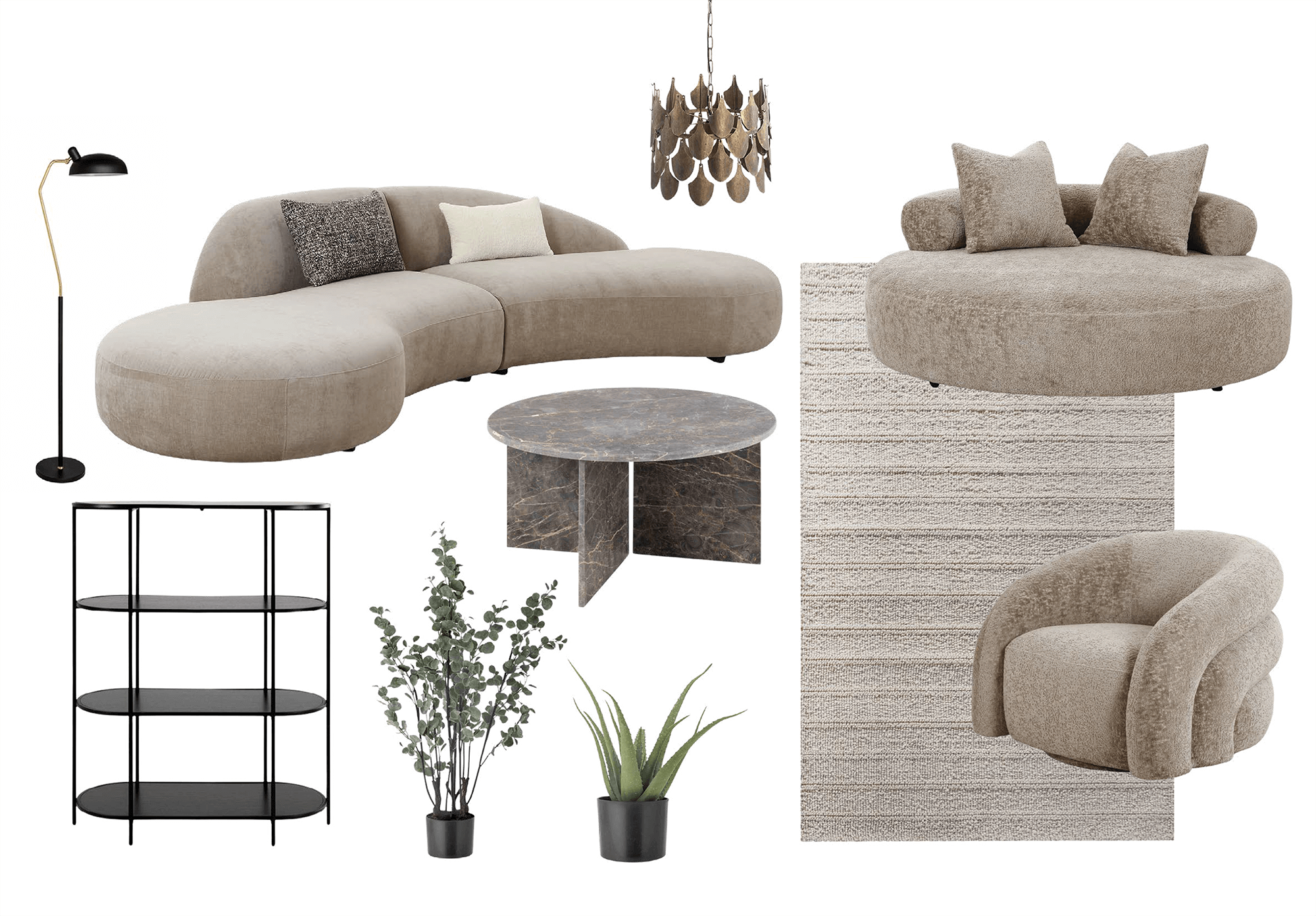
Boutique hotels stand out for their unique character and personalized experiences, with furniture playing a key role in shaping inviting spaces. As hospitality design evolves, staying ahead of furniture trends is essential for interior designers and architects. This article explores the latest trends defining boutique hotels and how thoughtful selections enhance guest experiences.


Balanced Interiors
In 2025, the key to creating memorable boutique hotel spaces lies in achieving balance. After years of shifting between minimalism and maximalism, the focus now is on harmony—blending aesthetics with functionality and character. Overly stark, cold minimalism has given way to designs that prioritize personality and warmth, emphasizing artistic expression and individuality. Boutique hotels are moving toward curated spaces that feature a mix of clean lines, soft textures, and personalized details. For instance, a room might pair a sculptural modern sofa with vintage-inspired side tables, creating a dialogue between contemporary trends and timeless charm. This balance ensures that spaces are stylish yet inviting, catering to the diverse tastes of guests while maintaining a cohesive design narrative.
Accent Pieces
Accent pieces are central to boutique hotel interiors in 2025, serving as focal points that draw the eye and define the space. Statement furniture like oversized armchairs, sculptural coffee tables, or striking chandeliers elevates interiors from functional to unforgettable. Rich jewel tones - emerald green, sapphire blue, and ruby red - dominate this trend, often showcased through luxurious materials like velvet and leather. Colour drenching, where walls, ceilings, and trims are painted in the same saturated hue, amplifies this aesthetic, creating a bold yet cohesive backdrop for accent furniture. In hotel lobbies, for example, a deep sapphire blue armchair can be paired with matching wall tones and contrasted with metallic or natural accents for depth. These layered, dramatic spaces evoke opulence and intimacy, encouraging guests to engage with the design while reinforcing the boutique hotel’s distinct character.


The Instagram Era
In today’s social media-driven world, boutique hotels are embracing design elements that cater to Instagram culture. Eye-catching interiors that photograph beautifully not only enhance guest experiences but also serve as organic marketing tools. This trend involves creating visually impactful “Instagram spots,” such as statement walls, interactive art installations, and themed public areas. For example, a creative garden with vibrant seating and bold floral arrangements becomes an irresistible photo backdrop. Furniture with unique shapes, bold colours, or unexpected textures also adds to the space’s allure. These design choices not only draw in guests but also extend the reach of the hotel’s branding through social media shares.
Biophilic Design
Biophilic design continues to shape boutique hotel interiors, seamlessly integrating nature to create calming and rejuvenating spaces. This approach embraces natural elements like wood, stone, and plants, which are proven to reduce stress and enhance emotional well-being. Organic shapes, such as curved furniture and rounded architectural details, complement this trend, encouraging social interactions and a sense of connection.
Hotel lobbies are becoming multifunctional hubs, segmented by living walls, artisanal partitions, or greenery-filled zones that balance functionality and aesthetics. For example, a lobby may feature a mix of seating areas defined by lush planters or reclaimed wood screens, providing both privacy and warmth. Beyond aesthetics, biophilic design incorporates sustainability, using eco-friendly materials and energy-efficient practices to resonate with modern travelers’ values. By bringing the outdoors in, boutique hotels create immersive environments that feel both luxurious and restorative.
Multi-purpose Furniture
As the lines between work and leisure blur, boutique hotels are embracing multi-purpose furniture to meet diverse guest needs. From workstations that double as dining tables to modular seating that adapts for meetings or relaxation, flexibility is key. This trend is particularly visible in lobbies, which now serve as dynamic social hubs rather than simple check-in areas.
Mixed-use layouts feature zones for coworking, informal gatherings, and events, often separated by artistic dividers or living walls. For instance, a seating arrangement with adjustable lounge chairs and mobile side tables creates spaces for both solo focus and group collaboration. These adaptable designs allow boutique hotels to cater to modern travelers who seek environments that align with both professional and personal lifestyles, ensuring comfort, functionality, and aesthetic appeal in equal measure.


Customizable Furniture
Personalization has become a hallmark of modern hospitality, and boutique hotels are leveraging customizable furniture to deliver tailored experiences. From adjustable seating heights and modular sofas to beds with customizable firmness levels, these innovations allow guests to feel truly catered to.
Made-to-order furniture takes personalization to the next level, allowing boutique hotels to craft pieces that reflect their unique style and story. From bespoke headboards featuring locally inspired designs to custom tables that match the hotel’s branding, these one-of-a-kind creations set the tone for a distinctive guest experience. Our custom furniture service enables designers to produce exceptional pieces that perfectly align with the property’s vision. By incorporating made-to-order furniture, boutique hotels can showcase their individuality while delivering a luxurious and personal touch.
Luxe Minimalism
In 2025, luxury is being redefined through sleek, minimalist designs that exude quiet elegance. Gone are the days of overtly opulent interiors; instead, the focus is on creating sophisticated spaces with clean lines and high-quality materials. Textures such as boucle fabric, brushed metals, and rich woods replace excessive ornamentation, offering a more refined approach to luxury.
Boutique hotels are embracing luxe minimalism by incorporating subtle yet luxurious pieces, like a soft boucle armchair with metal legs or a polished marble coffee table paired with minimalist lighting fixtures. This trend prioritizes the use of premium materials, ensuring that each piece contributes to a sense of understated refinement. The result is an environment where simplicity meets sophistication, creating a calming and welcoming atmosphere for guests who appreciate elegance without excess.
Textures Take Center Stage
Textures are playing a crucial role in creating tactile, visually stimulating environments in boutique hotels. Layering contrasting materials such as velvet, leather, and raw wood not only adds depth to a space but also invites guests to engage with their surroundings in a more sensory way.
Textured elements like tufted cushions, woven textiles, and textured tabletops are becoming key focal points, enhancing the overall guest experience. For example, a plush velvet sofa might be paired with a woven leather chair, or a wooden dining table could feature a textured ceramic vase as a centerpiece. These contrasting textures not only create visual interest but also encourage guests to feel the materials, adding an extra layer of immersion to the environment. By prioritizing tactile design, boutique hotels ensure that every corner of the space offers a sensory experience that is both luxurious and inviting.
Technology Reigns
As technology continues to evolve, boutique hotels are embracing smart innovations that enhance both guest experiences and operational efficiency. Today’s hotels are increasingly integrated with apps and automated systems that allow guests to personalize their stay, from controlling lighting and room temperature to ordering room service with the touch of a button.
Even in spaces designed for relaxation, technology plays a vital role. Smart systems can adjust ambiance by regulating lighting, heating, and sound to create the perfect environment. Artificial intelligence is also making waves in guest services, offering personalized recommendations, predictive analytics for service optimization, and even room automation. For boutique hotels, this trend ensures an elevated experience where comfort, convenience, and innovation come together seamlessly, allowing guests to feel pampered while staying connected in a modern world.
Endless Possibilities, Exceptional Designs.
At Furnicher, we specialise in providing premium furniture solutions tailored to the unique needs of the hospitality industry. Whether you're furnishing a boutique hotel, a stylish restaurant, or a lively bar, our expertly crafted furniture is designed to elevate your space, combining durability, functionality, and aesthetics.
We are the perfect choice for businesses because of our high stock levels, low prices, and free same day dispatch.
For additional information or any question about your personalised interior design work, contact our B2B Trade Account Managers here Mon to Fri 8 am – 5 pm:
trade@furnicher.com +31 (0) 20 261 3431
 9000+ TRUSTPILOT REVIEWS
9000+ TRUSTPILOT REVIEWS


 EN
EN DE
DE FR
FR NL
NL DK
DK SE
SE